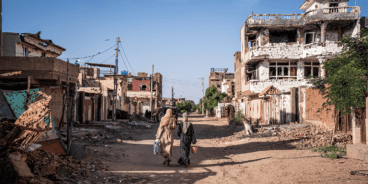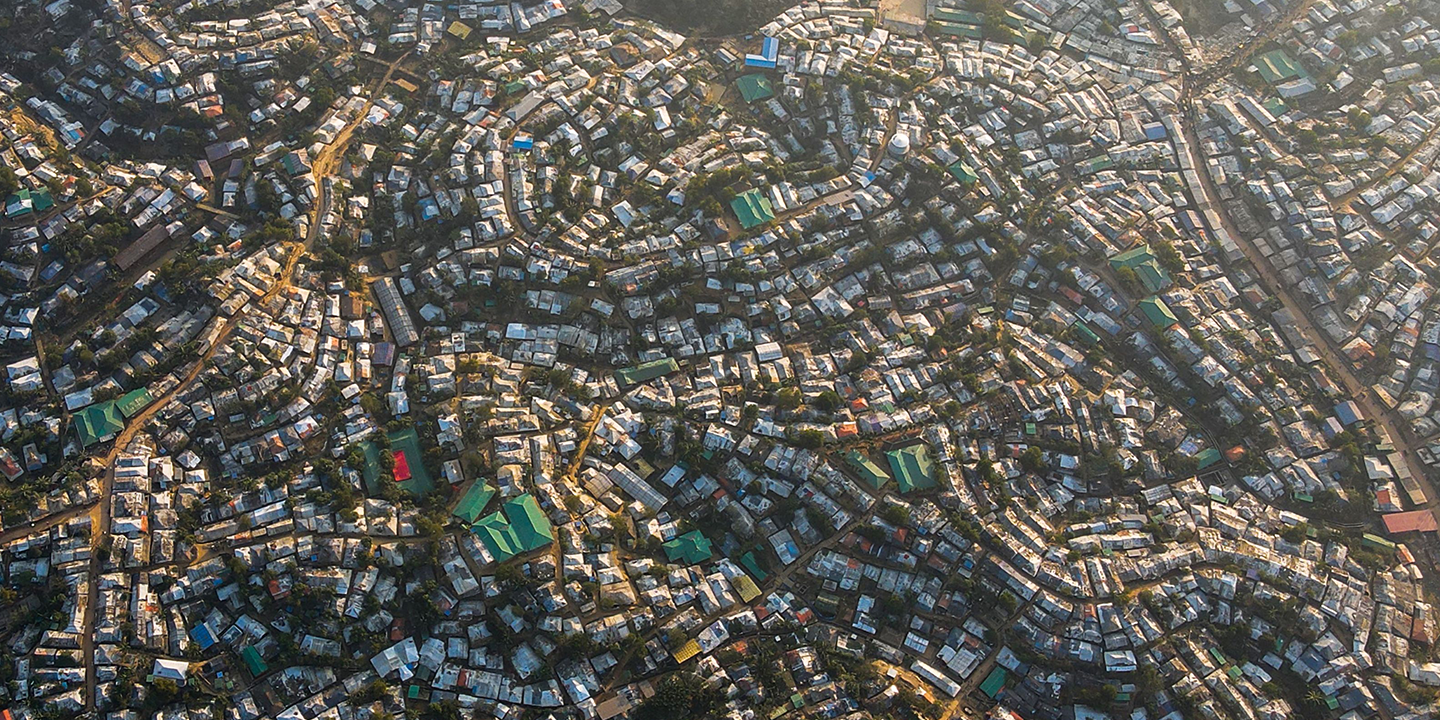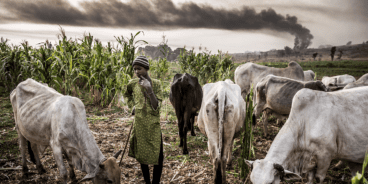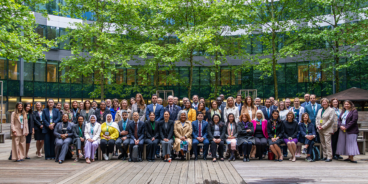

Atrocity Alert No. 258: Special Issue on global displacement and mass atrocities
Atrocity Alert is a weekly publication by the Global Centre for the Responsibility to Protect highlighting situations where populations are at risk of, or are enduring, mass atrocity crimes.
GLOBAL DISPLACEMENT AND MASS ATROCITIES
Last Sunday, 20 June, was World Refugee Day. Ahead of the commemoration, the UN Refugee Agency (UNHCR) published its annual report on Global Trends in Forced Displacement, noting that 82.4 million people have now been displaced by “persecution, conflict, violence, human rights violations or events seriously disturbing public order,” including 48 million people who are displaced within their own country and at least 26.4 million refugees. Despite the COVID-19 pandemic and UN Secretary-General António Guterres’ March 2020 call for a global ceasefire, this represents an increase of almost 3 million displaced people since 2019.
According to UNHCR, over one percent of humanity is currently displaced and there are now twice as many forcibly displaced people than there were a decade ago in 2010. This dramatic increase is not just a reflection of the expansion and intensification of conflicts where perpetrators are targeting civilians, but also of the longevity of crises that prevent displaced populations from safely returning to their homes.
As in previous years, the Global Trends report provides evidence of the close connection between atrocity crimes and mass displacement. More than two thirds of all people who have fled abroad come from just five conflict-torn countries – Syria, Venezuela, Afghanistan, South Sudan and Myanmar. In all of these countries, state authorities and/or non-state armed groups have perpetrated crimes against humanity or war crimes. Since 2017 more than 750,000 Rohingya refugees who fled genocide in Myanmar have also found sanctuary in the world’s largest refugee camp in Cox’s Bazar, Bangladesh.
Meanwhile, the number of internally displaced people increased by more than 2.3 million during 2020 as a result of crises in Ethiopia, Sudan, the Sahel, Mozambique, Yemen, Afghanistan and Colombia. Displaced populations are particularly susceptible to sexual and gender-based violence, exploitation and abuse. They require urgent humanitarian assistance and suffer significant long-term socio-economic disadvantages. During 2020, the COVID-19 pandemic had a disproportionate and devastating impact on these vulnerable populations, especially children.
CHILDREN AND ARMED CONFLICT
While children account for 30 percent of the world’s population, they comprise 42 percent of those forcibly displaced by conflict, persecution and violence. The risk of recruitment to armed groups and exposure to sexual and gender-based violence is especially acute when children are displaced. Nearly one million children were born as refugees between 2018 and 2020. The UN High Commissioner for Refugees, Filippo Grandi, noted that, “the tragedy of so many children being born into exile should be reason enough to make far greater efforts to prevent and end conflict and violence.”
On Monday, 21 June, the UN Secretary-General published his annual report on children and armed conflict. Many of the “grave violations” against children outlined in the report – including the killing, maiming and rape of children, the recruitment of child soldiers, and the targeting of schools and other civilian infrastructure – constitute war crimes or crimes against humanity. In 2020 more than 23,946 grave violations were perpetrated against children across 21 active conflict situations. More than 8,422 children were killed or maimed and over 8,500 children were recruited and used by armed groups. Verified cases of abduction and sexual violence against children increased by 90 and 70 percent, respectively, from 2019.
The majority of these violations were perpetrated in countries where mass atrocities are ongoing or have recently been perpetrated. These also overlap with several countries listed in UNHCR’s Global Trends report.
Afghanistan remained the deadliest conflict in the world for children with at least 2,619 children killed or maimed in 2020. Meanwhile over 3,400 grave violations were recorded in the Democratic Republic of the Congo (DRC), the second highest number of violations in any country situation. Five armed groups active in the DRC were added to the report’s annexed list of verified perpetrators. The DRC is also home to the largest displacement crisis in Africa. For the first time, the Secretary-General’s report also included information on the situation facing children in Burkina Faso, Cameroon, and the Lake Chad Basin, where populations are facing possible atrocity crimes as a result of escalating conflicts and disregard for international humanitarian and human rights law.
The Secretary-General’s report is an important tool for “naming and shaming” known perpetrators. However, several offending parties were excluded from the report’s annexes this year despite UN-verified evidence of their responsibility for grave violations against children. In particular, the “Coalition to Support Legitimacy in Yemen,” comprised of forces from Saudi Arabia and the United Arab Emirates, was excluded despite being found responsible for killing and maiming at least 194 children in 2020.
The government of Israel was also excluded from the Secretary-General’s annex, despite evidence of violations and abuses perpetrated against children in the Occupied Palestinian Territories, including attacks on schools and hospitals. Nor did the Secretary-General’s report address the catastrophic situation facing children in Ethiopia’s war-torn Tigray region or in northern Mozambique where armed extremists continue to attack isolated towns. However, in a welcome development, Myanmar’s armed forces, known as the Tatmadaw, were re-listed in the report’s annexes for recruiting and using over 720 children in armed conflict.
It is imperative that all perpetrators of grave violations against children be held to the same standard. The failure to list all parties who are known to have been responsible for perpetrating grave violations against children could potentially undermine the credibility of the annual report. UN Security Council members should insist on a single, complete list of perpetrators that is evidence-based and accurately reflects data collected and verified by the UN’s Monitoring and Reporting Mechanism.
1 PERCENT OF HUMANITY
One in every 95 people on our planet is now a victim of forcible displacement. High Commissioner Grandi stressed that, “solutions require global leaders and those with influence to put aside their differences, end an egoistic approach to politics, and instead focus on preventing and solving conflict and ensuring respect for human rights.”
World Refugee Day should remind us that humanitarian assistance and refugee resettlement are no substitute for meaningful investment in conflict prevention and policies that build a state’s capacity to prevent crimes against humanity, war crimes and genocide before they occur. In keeping with the 1951 Refugee Convention, the international community has both a moral and legal obligation to assist refugees. Furthermore, all UN member states should implement the Optional Protocol to the Convention on the Rights of the Children, the Paris Principles and the Vancouver Principles, as well as abide by the Safe Schools Declaration.
Savita Pawnday, Deputy Executive Director at the Global Centre for the Responsibility to Protect, said that, “in 2005 UN member states adopted the Responsibility to Protect principle in order to better prevent and respond to the types of crises that are driving historic levels of forcible displacement and leading to disturbing human rights violations perpetrated against children. It is not enough to give speeches about the importance of prevention. We must break the cycle of inaction, indifference and impunity which is condemning millions of people to misery.”
Related Content


Atrocity Alert No. 444: Nigeria, Haiti and South Sudan
